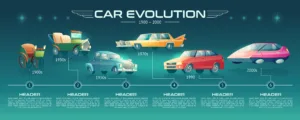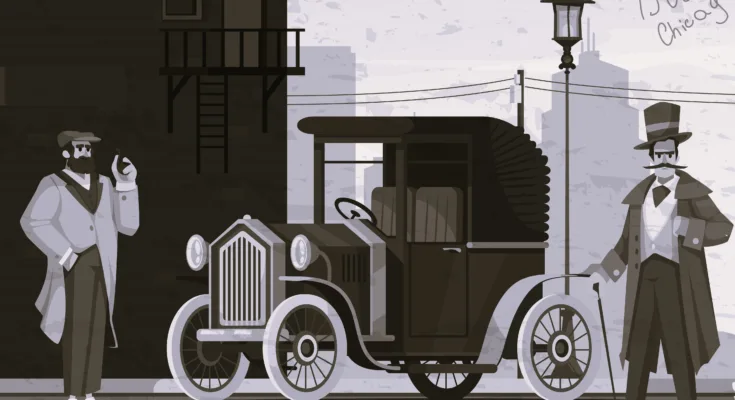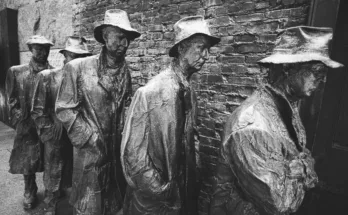Introduction
Automotive invention is a striking narrative spanning over several centuries and continents to divulge the creativity and determination of numerous inventors. No matter how far the automobile has come from the extremely simple steam-powered vehicles of the 17th century to the modern, sleek and highly sophisticated cars, the story of the automobile characterizes human creativity and technological development.
The Dawn of Automobiles
The story of automobile invention has the strands of innovation and purpose that too crossed the centuries. The journey started in 1672 with the birth of the first vehicle that was powered by steam. Nevertheless it came not into being until 1769 when Nicolas-Joseph Cugnot a French engineer and inventor created the vehicle, which is considered by some historians as the first real automobile – a steam-powered tricycle intended to carry humans.

Nicolas-Joseph Cugnot’s Steam-Powered Wonder
Cugnot invented the first automobile thus contributing to the birth of the automotive industry. His steam-powered tricycle, still rather primitive, became a milestone on the road to more sophisticated engineering. Despite its crudeness and inadequacies, it signified the first step towards a wide spread application of mechanized transportation.
The Evolution of Engines
During the 19th century, the design of engines underwent significant transformations. In 1826, Samuel Brown again rustled up history with one of the sorts of internal combustion engines industrially applied. This was a departure from steam power that created the stage for a new era in car propulsion.
De Rivaz Engine and the Shift to Internal Combustion
In this era, the de Rivaz engine gained recognition as one of the first of the internal combustion engines, becoming an example of such an amazing technology. They investigated various types of combustion cycles, and eventually created the two- and four-stroke engines. The transition from steam to internal combustion engines ushered in new modes of travel, and gasoline became a favored fuel resource.
The Birth of Modern Cars
The real step change in the automobile field happened in 1886 when Carl Benz unveiled his first automobile which he called Benz Patent-Motorwagen. It was equipped with a gasoline-powered engine and widely regarded as the first-ever prototype of a modern car. This was a turning point of model from experimental inventions to a marketable vehicle that was functional from the every day users.

Carl Benz’s Game-Changing Patent-Motorwagen
Benzet was a parade of engineering knowledge and talent of human mind. The Patent-Motorwagen had a combustion engine, a chassis, and wheels – a foursome that would become the sheet-anchor for all cars. The invention was pioneering and it displayed the path for other forthcoming innovations in the auto industry.
Mass Production
Along with the process of mass production and individual craftsmanship into automobile industrialization, the automobiles were widely supplied. As far back as 1908, Ford Motor Company manufactured the legendary Model T, which the industry witnessed as a car produced on a line that got people moving, therefore revolutionizing it.
Ford Model T: Transforming Production and Accessibility
Henry Ford gave new face to the automobile industry by introducing assembly line method of production starting from the level of luxury item which was accessible to masses. Mass production has given rise to the productivity, an element that reduced cost of the cars and thus, brought down the car prices in the world.

Conclusion
The creation of the automobile tells a complicated story that features numerous people carrying out different tasks and making technical discoveries. While Nicolas-Joseph Cugnot, Samuel Brown, and Carl Benz made major contributions, it is necessary to take into account the collective efforts of numerous individuals that were put forward to facilitate this innovative development.
Human inventive spirit was highlighted with the transition from steam powered tricycles to gasoline and with the progress from manual craftsmanship to mass production. Automobile is the symbol of technical progress as well as the trigger of the social and economic change. With increasing popularity of electric and self-driving vehicles due to innovation, the automobile invention has become a monument that celebrates human imagination.

FAQs
Q: How is the credential given to the one who was the inventor of the first modern motor car?
A: Carl Benz succeeded in building the first ever practical automobile in 1886, which made him more famous as the inventor.
Q: What Henry Ford has done for the automobile industry?
A: Henry Ford is credited for a path breaking automobile manufacturing revolution through the industrialization of the production line which entailed the production of the Ford Model T in a mass production manner.
Q: What is the importance of the revival of the internal combustion engines in vehicle evolution as a whole?
A: The development of internal combustion motors gave more efficiently and powerful vehicles, which subsequently changed the way people moved to the next station, making the journey more comfortable.
Q: What are the more remarkable inventions appear in the history of automobiles?
A: The first notable advancement in the history of the automobile was the invention of a steam-powered vehicle, by Nicholas Cugnot, in 1769. Other significant events that took place in the automobile industry were the development of internal combustion engines, the creation of the first modern car, and the introduction of mass production techniques.





Инвестиции в арендный бизнес в Москве: как минимизировать риски
арендный бизнес с арендатором москва https://arendnyj-biznes-495.ru/ .
Мастер-класс кондитеров: Особенности и секреты работы с марципаном
кондитер москва https://kursy-konditera-moskva.ru .
Курсы по продвижению сайтов: SEO для начинающих
курсы сео оптимизации https://www.kursy–seo.ru/ .